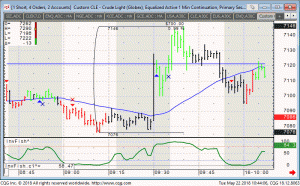
If you are new to investing, you probably started with or have experience in stocks. Stocks are an excellent way to gain experience in investing, and grow your investment portfolio. With your newly gained experience, you may be ready to take on some more sophisticated asset classes, such as commodities which can often be more complicated and more risky, but yield a much higher return. At Cannon Trading, we will walk you through everything you need to know about how to invest in commodities effectively for the highest overall return, and pair you with your own professional broker to achieve your trading goals.
If we are going to learn how to invest in commodities, first, let’s begin by defining what a commodity is. A commodity is defined as a select group of basic goods in demand all across the globe. This includes harvested goods such as wheat, corn and flour, as well as energy sources and metals such as oil, gas, gold and aluminum. Since it is such a vast category, commodities are divided into two groups: hard and soft. Hard commodities such as metals and gas require mining or drilling while soft commodities are things that are grown and require harvesting. These commodities are global, and as such, is a good idea to invest in them. Since these are global assets, people often don’t care, or don’t think about where they come from, or if there is any brand name attached to it making it wise to invest in commodities.
Beginning in the 1800’s, finding a trader willing to take a position in a forward contract was an easy task, but much more difficult to find a trader at the time of contract settlement. As a result, the Chicago Board of Trade created futures contracts. The objective of futures contracts is to minimize the risk of fluctuating prices by putting up and maintaining fixed original margins. When investing in commodities, this fixed pricing is vital. Commodities trading began shortly after with the trading of agricultural goods. As the market place expanded, it began to involve financial contracts such as government backed securities, foreign currency, metals, energies, and more. With these resources being naturally occurring, investing in commodities may seem like a safe option. However, it is this trait that makes them prone to supply and demand, and the risk control became necessary for farmers.
This is where learning how to invest in commodities becomes risky. Commodities are naturally occuring, making investing in them an often volatile practice due to the nature of supply and demand. Depending on the individual product’s relationship with supply and demand will make investing in some commodities more risky than others. For example, a bountiful harvest of wheat crops in a season will increase our supply of wheat causing its price to fall. However, in the event of a naturally occurring threat such as a drought or flood, prices of wheat may go up for lack of future supplies. How can you choose which commodity to invest in? It is important to note that some commodities are more volatile than others. At certain times, hard commodities like gold can be less volatile than soft commodities like wheat or corn, and other times the opposite is true. When learning how to invest in commodities, it helps to imagine which commodity will be more consistent, and which will involve a higher risk/reward ratio when basing your decision.
When learning how to invest in commodities, it is important to know your options. Given commodities are mostly physical goods, there are several options you can take. The first is investing this your commodity directly by buying the actual physical product. You can also buy shares of stock in companies producing your commodity or exchange-traded funds specializing in your commodity. If you are looking for an alternative, you may want to look into a futures contract. A commodities futures contract specifically is an agreement between a buyer or end user and a seller to make or take delivery of a commodity at an agreed upon price at a designated date. A futures contract will help to mitigate unforeseen fluctuation in the value of commodities and ensure that the transaction is honored by all those involved.
Any successful financial portfolio requires diversification. Your financial portfolio should be filled with diverse asset classes and commodities that will react differently to the financial world around them. Investing solely in soft commodities in one area may lead to financial hardship in the event of a low supply yield. Investing in solely hard commodities such as gold and crude oil can be cumbersome and hinder your diversification. Cannon Trading offers more information and helpful resources on how to invest in commodities. You and your broker will work together to achieve your trading goals and grow your portfolio. You will also have access to tools and valuable market information to help you begin diversifying your portfolio with valuable commodities. In an impersonal world, having a good relationship with a high quality broker can make all the difference.
Disclaimer – Trading Futures, Options on Futures, and retail off-exchange foreign currency transactions involves substantial risk of loss and is not suitable for all investors. You should carefully consider whether trading is suitable for you in light of your circumstances, knowledge, and financial resources.





